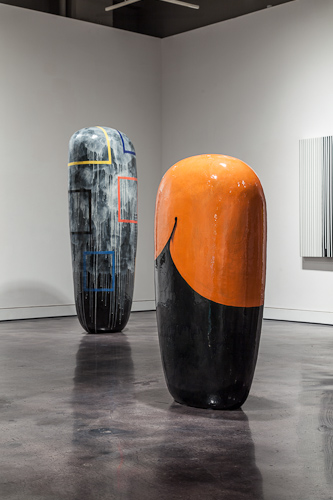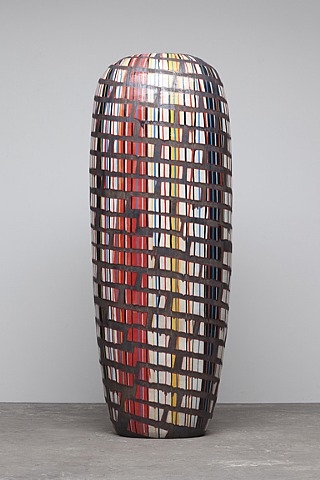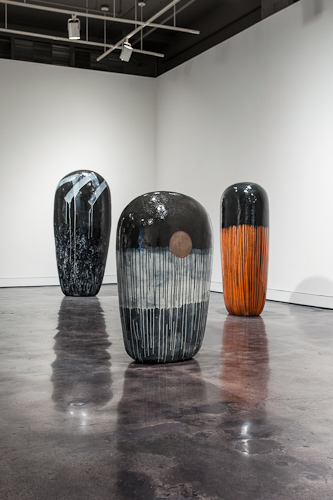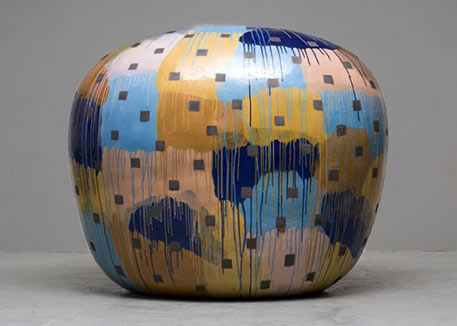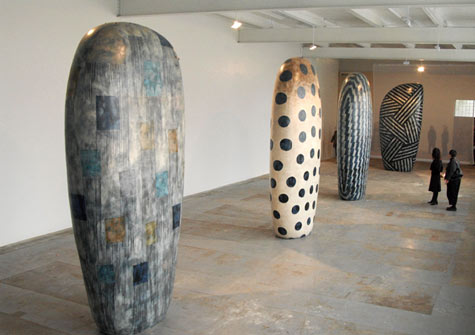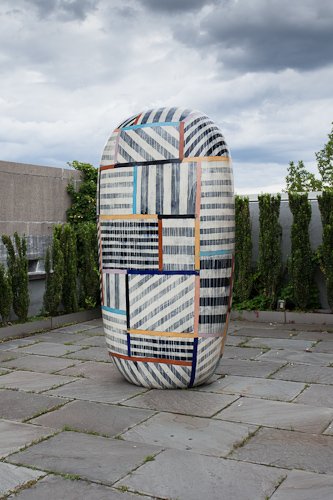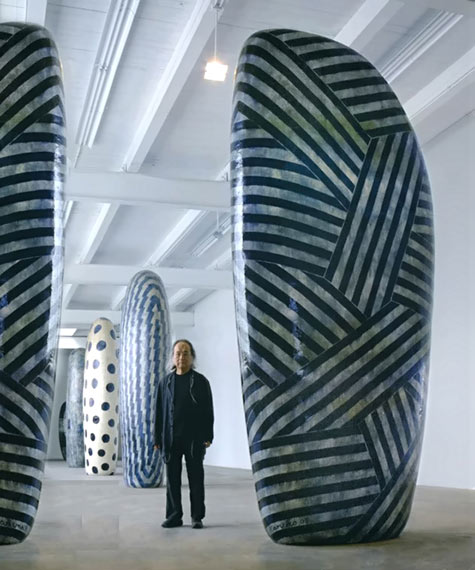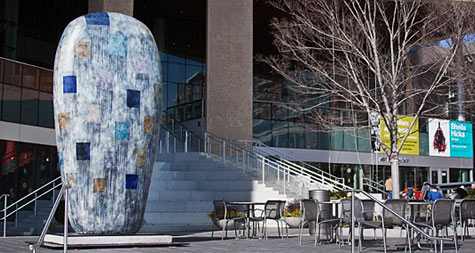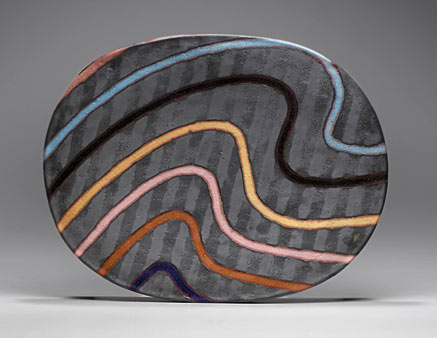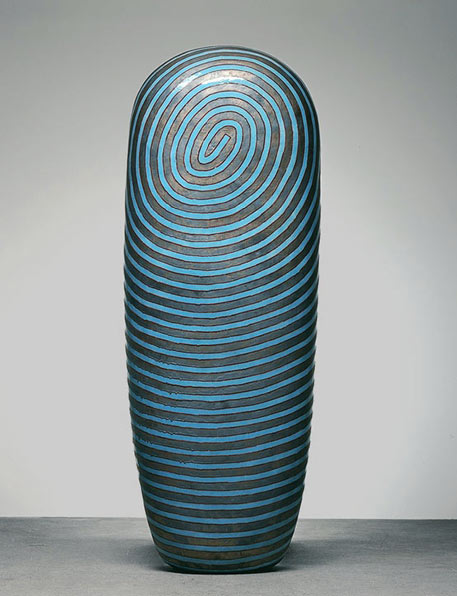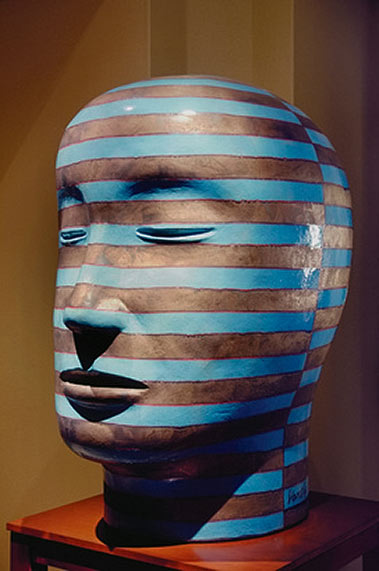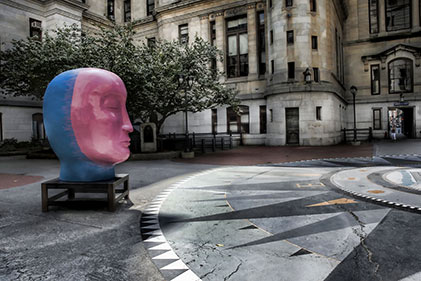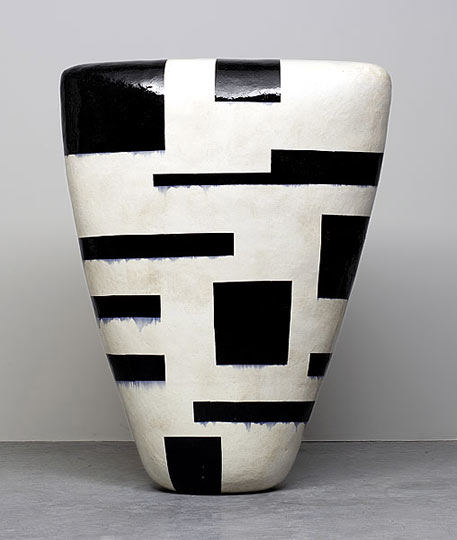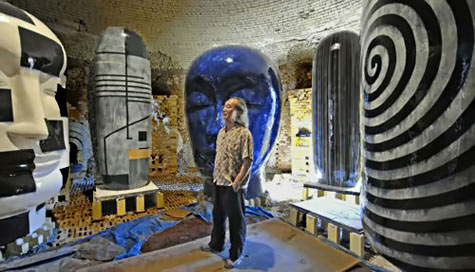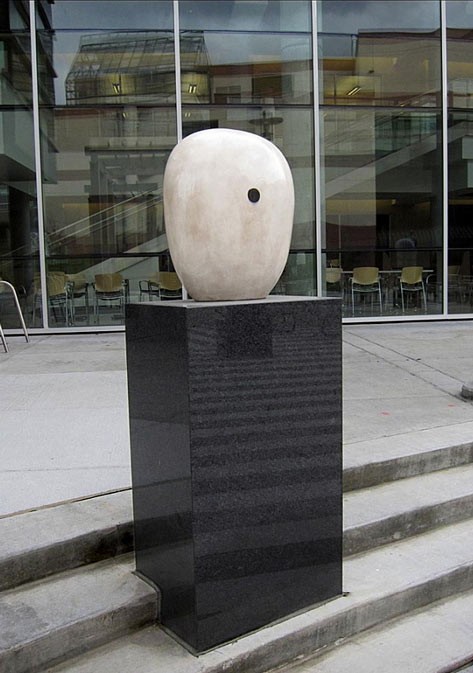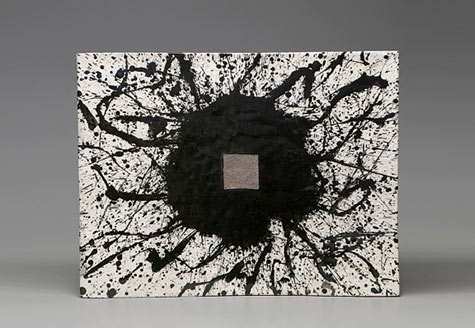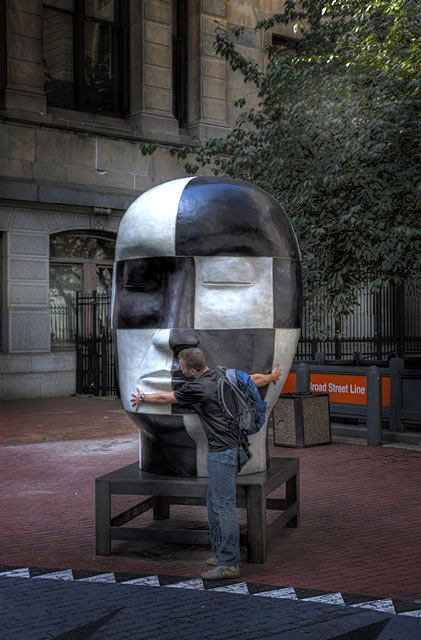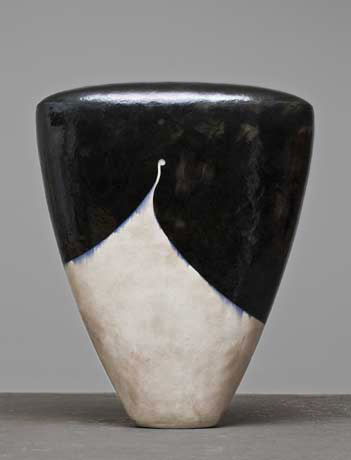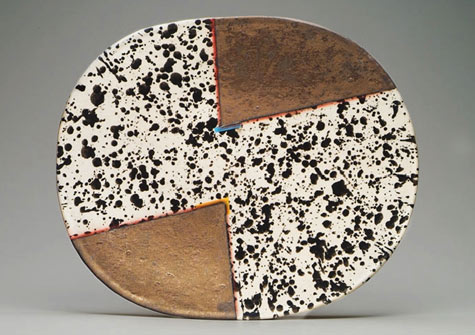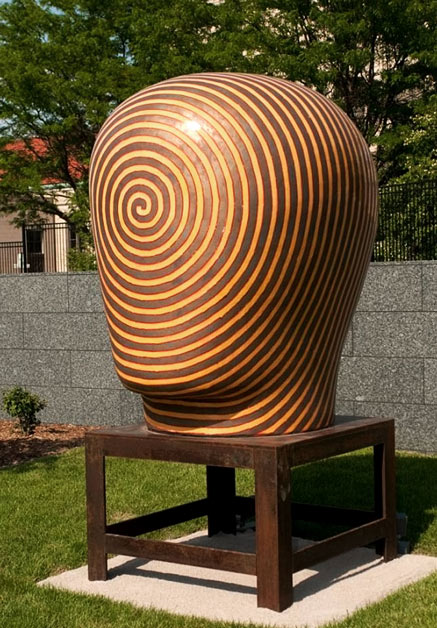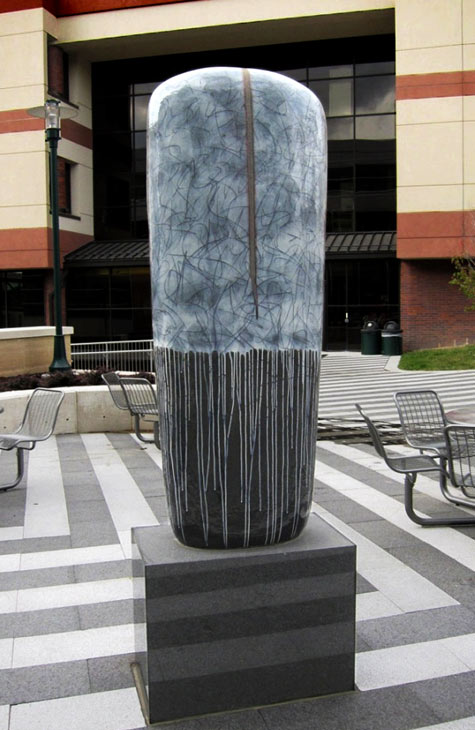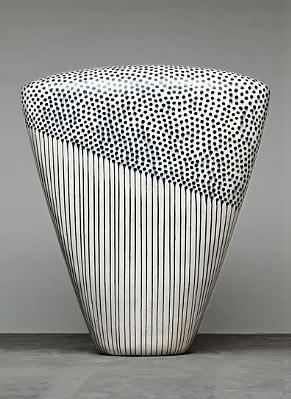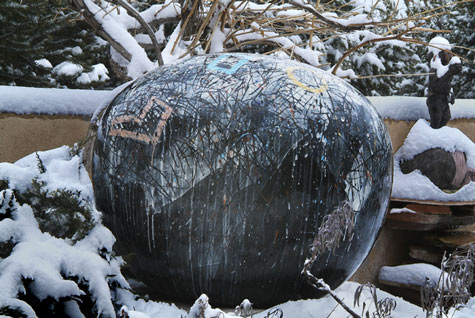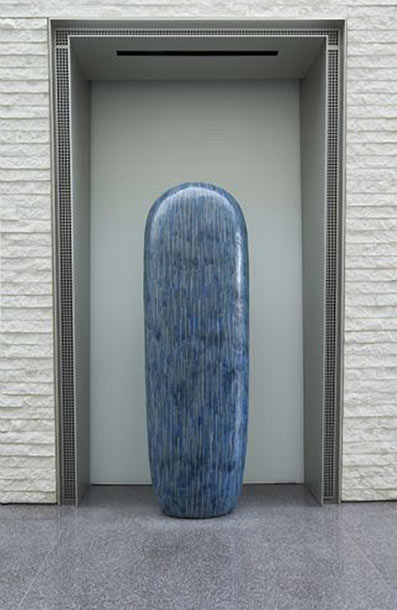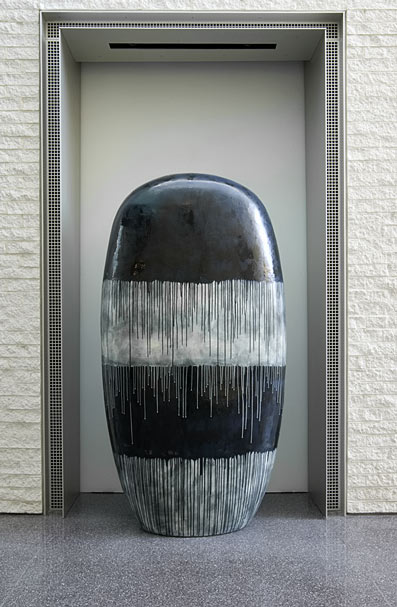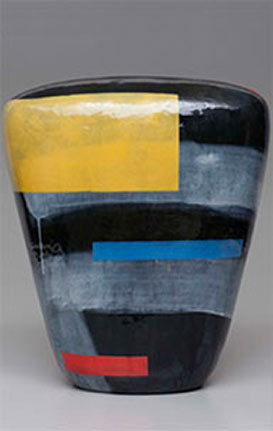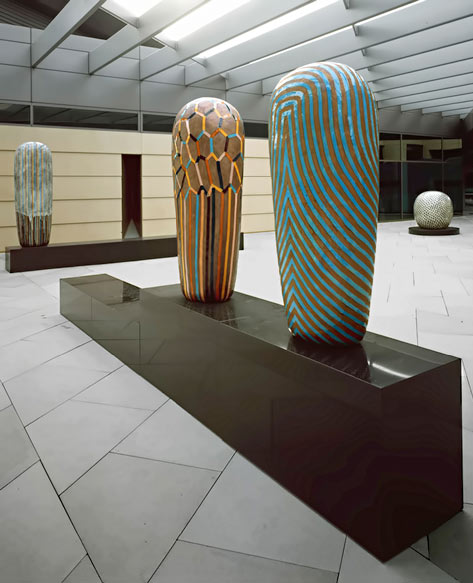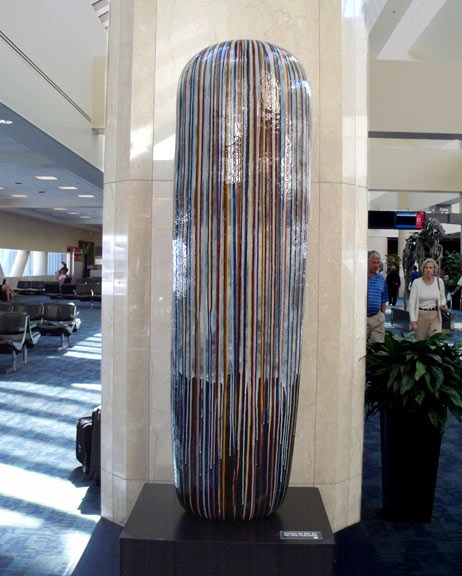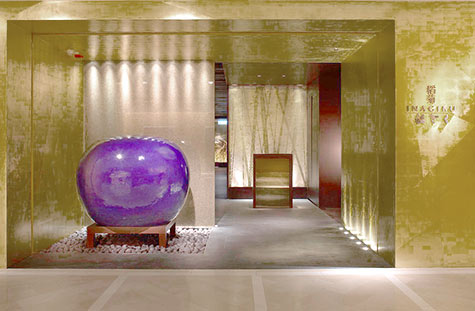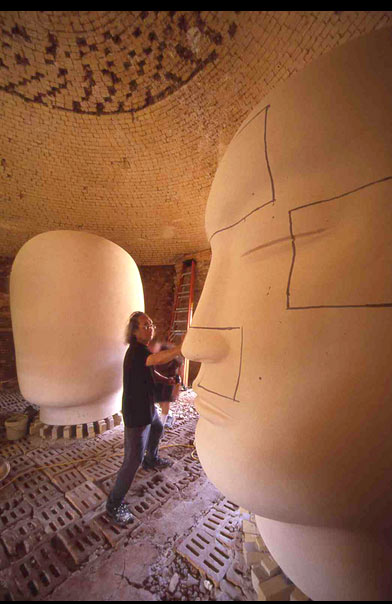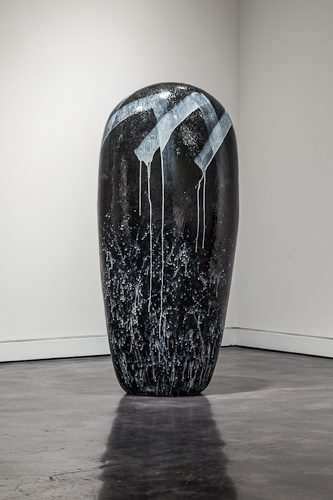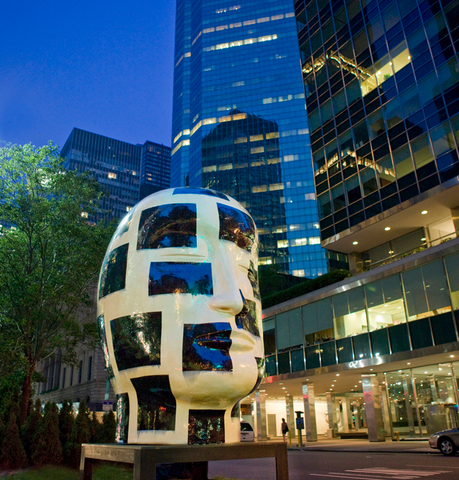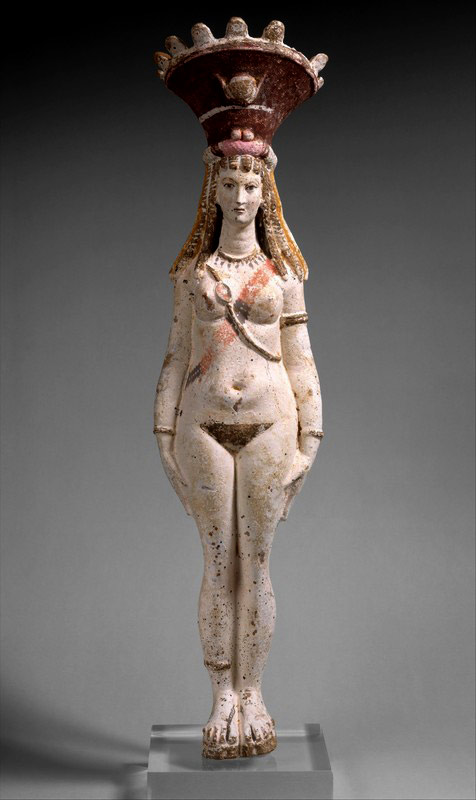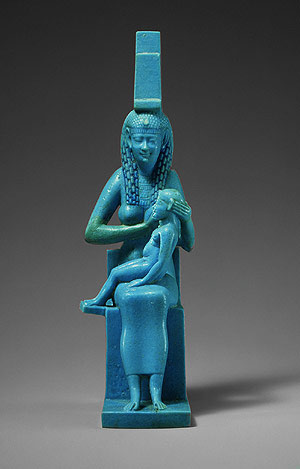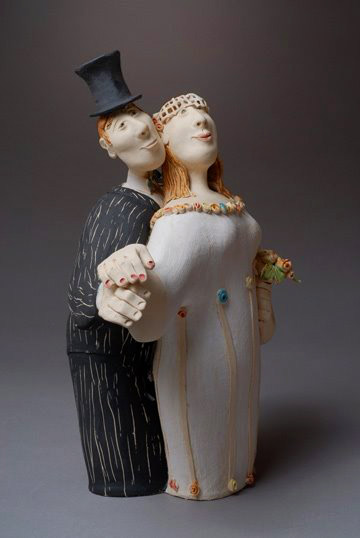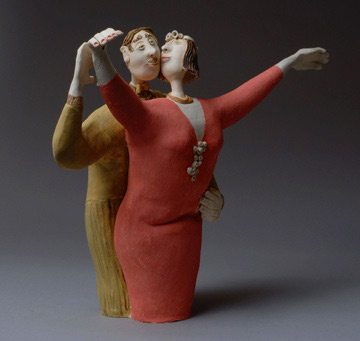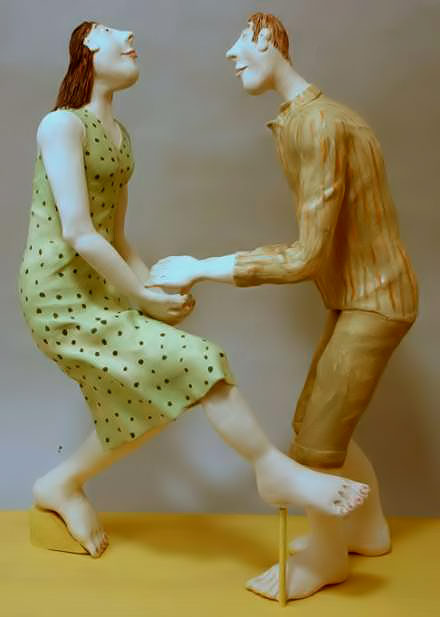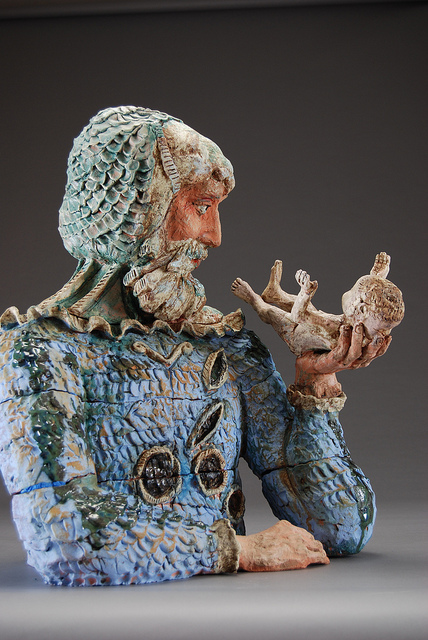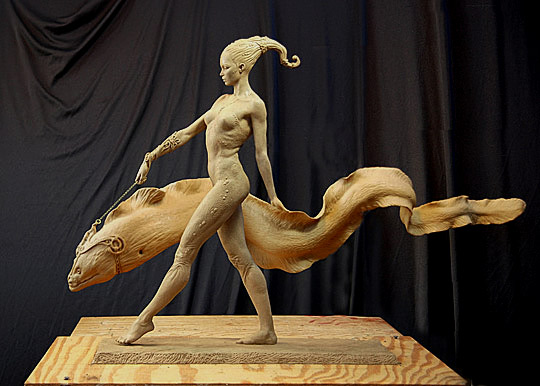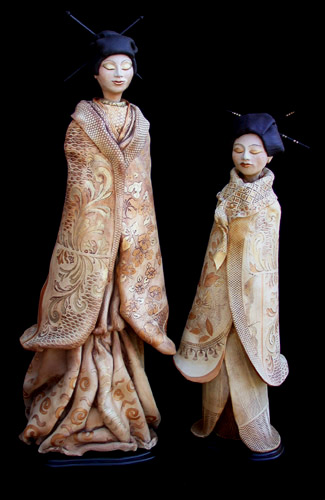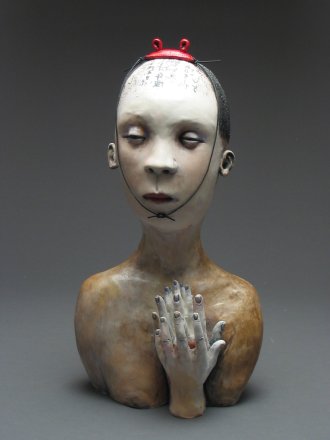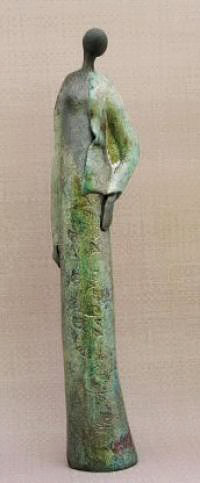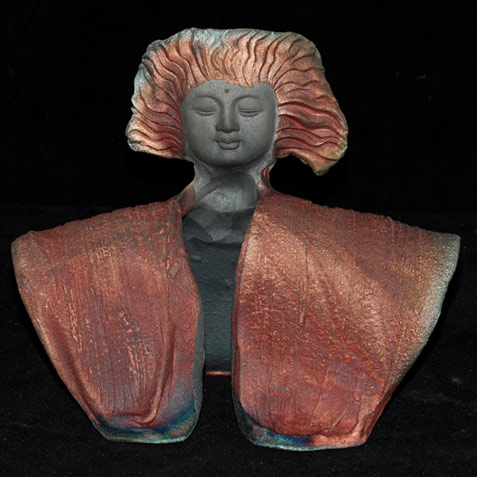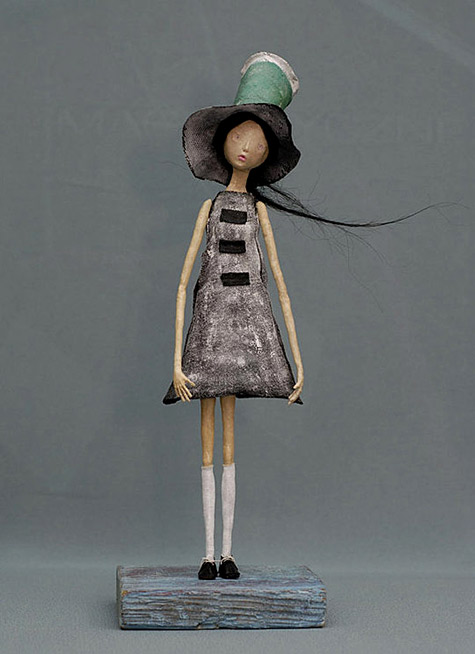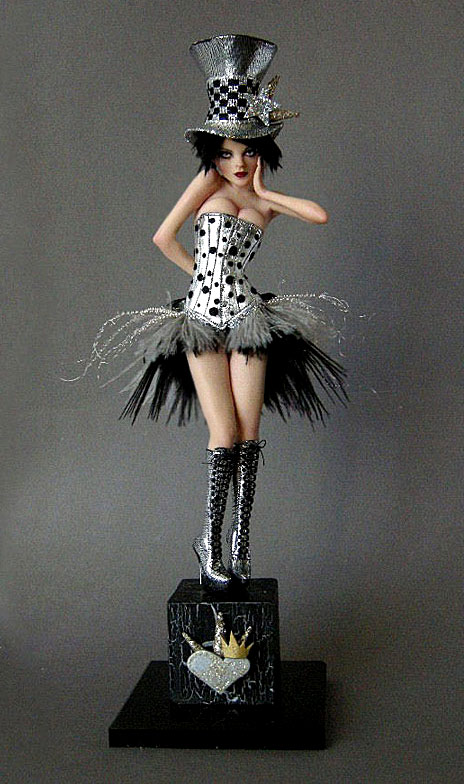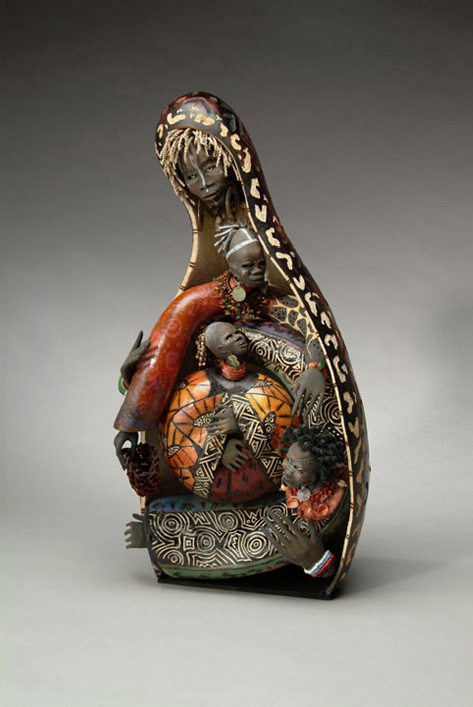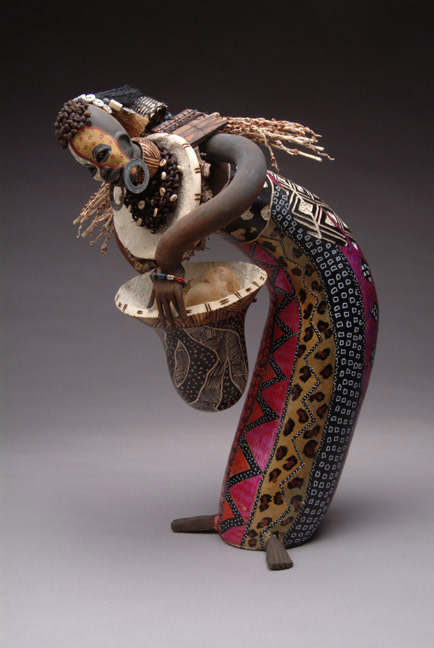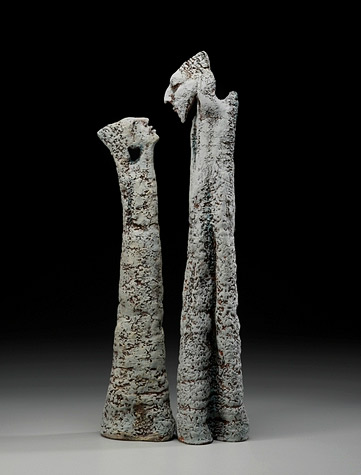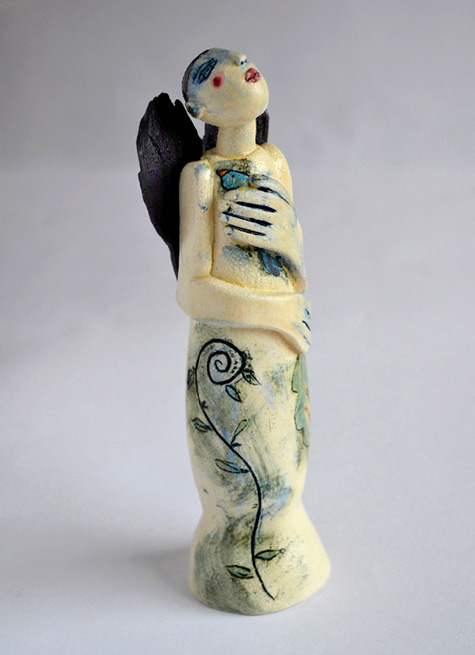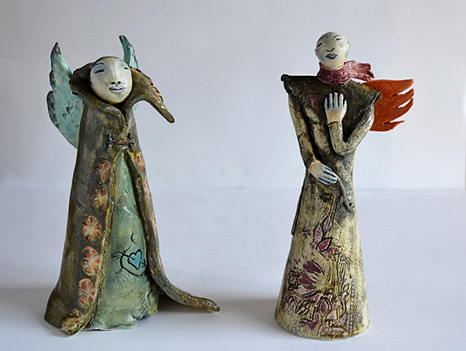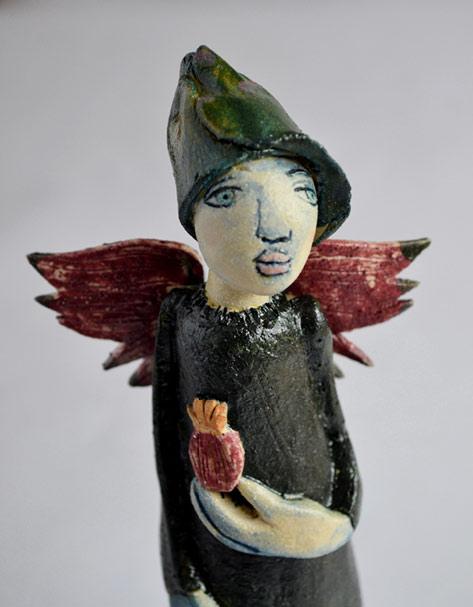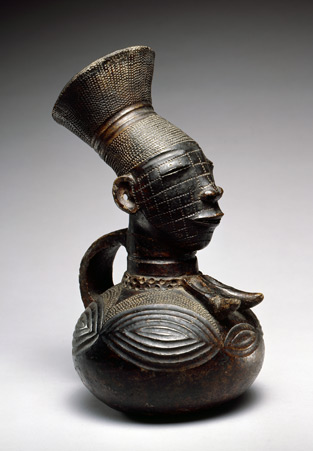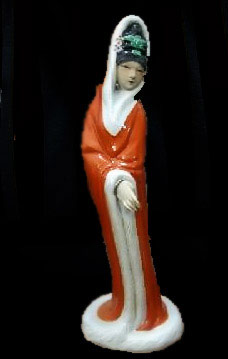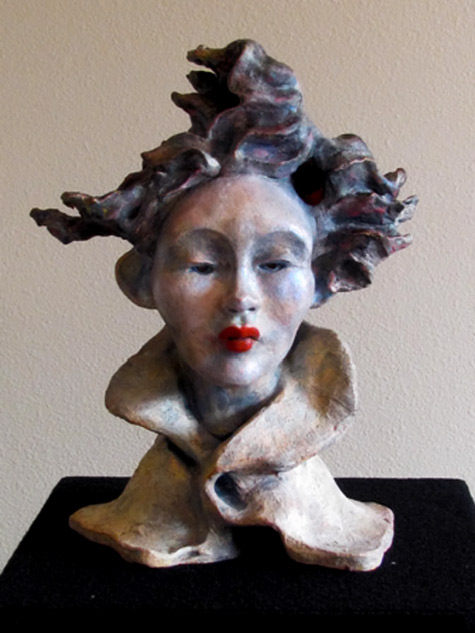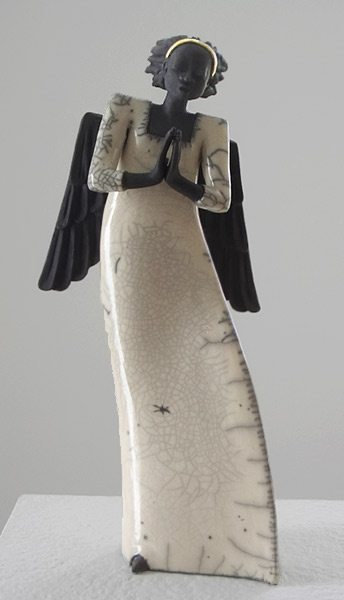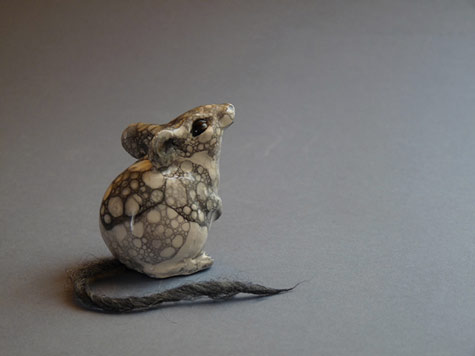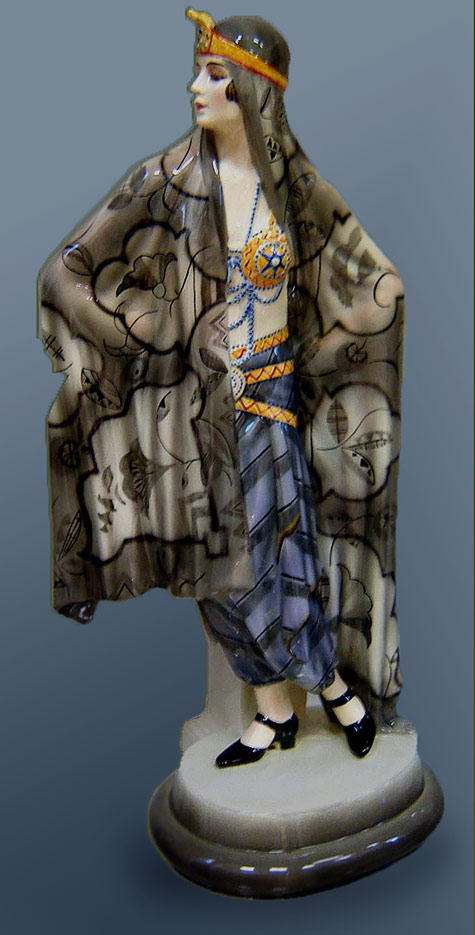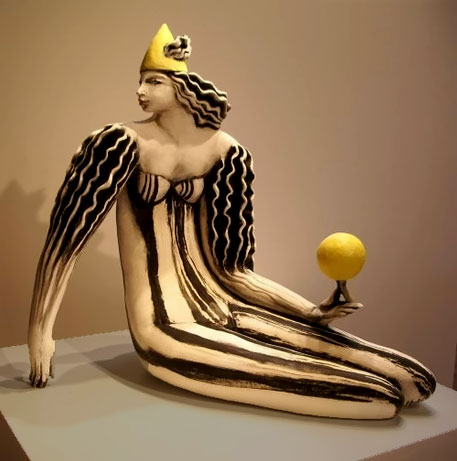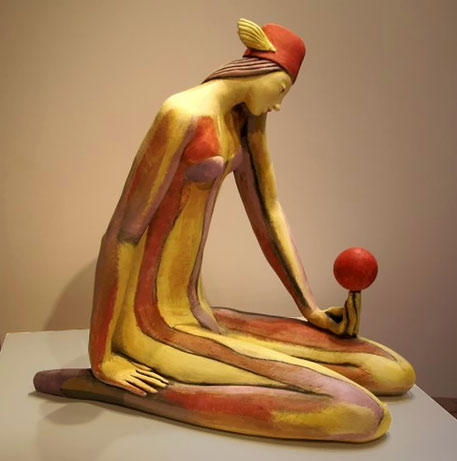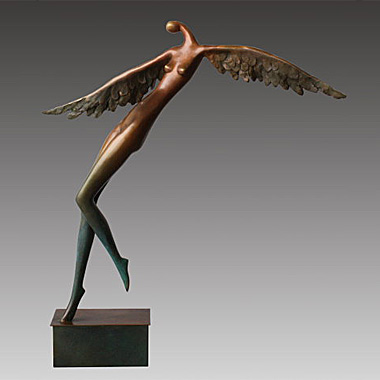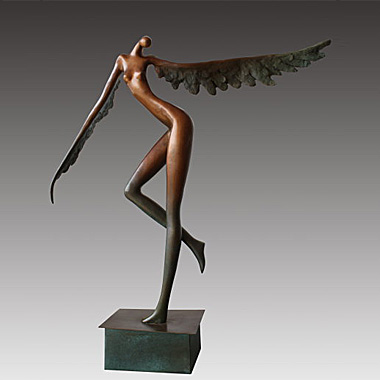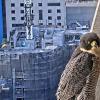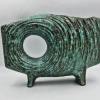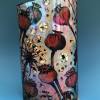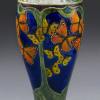Jun Kaneko, ceramic sculptural artist.
Jun Kaneko, 2012
Jun Kaneko was born in Nagoya, Japan in 1942 and went to the USA in 1963. He began studying ceramic art at the Chouinard Institute of Art in California where his focus became drawn to sculptural ceramics. He expanded his studies in contemporary ceramics with Peter Voulkos in Los Angeles and also Paul Soldner and Jerry Rothman. He has since pursued a dynamic and varied studio practice in painting, sculpture, ceramics and installations, and he’s currently based at his third studio in Omaha, Nebraska. Jun has blazed a trail in ceramic innovation with his pioneering work in the creation of tall and rounded, monolithic glazed structures known as dangos ( Japanese translation – dumplings or rounded form ). This has required the redefining of technical and artistic boundaries as his sculptures are of a size that is challenging in the firing process and for the structural integrity of this type of ceramic form. Some sculptures can weigh in the vicinity of 1000 lbs. After construction, his work generally takes four months of drying time and can have up to a 37-day firing process. Even larger than his dangos are his human head ceramic sculptures, three of which were on view in 2008 on New York City’s Park Avenue Malls. Kaneko’s work is engaged in serious explorations of order and disorder, simplicity and complexity and deliberate action and spontaneity.
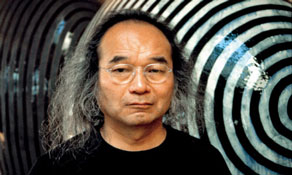
Kanekos’s professor at the University Of California , Peter Voulkos, stated : “Kaneko’s ceramic works are an amazing synthesis of painting and sculpture. His works are enigmatic and elusive, simultaneously restrained and powerful, Eastern and Western, static and alive, intellectual and playful, technical and innovative”
Kaneko’s exceptional artistic accomplishments in public art, set design, and architectural projects have led to his work now being displayed in over fifty museum collections throughout the world including Arabia Museum, Helsinki, Finland; Detroit Institute of Arts; Los Angeles County Art Museum; Museum of Art and Design, NY; The National Museum of Art, Osaka, Japan; Philadelphia Museum of Art; Phoenix Art Museum and Smithsonian American Art Museum.
I think it is truly fantastic to see ceramic sculptures successfully manifested on this scale.
Dango ceramic – 2011
( Elaine Baker gallery )
Locks Gallery
Philadelphia
Jun Kaneko
Mission Clay Pittsburgh Project
Locks Gallery
Philadelphia
This photo exemplifies the bold rhythmic patterns Jun likes to use on the surface decoration of his giant ” 3d canvases “
Mint Museum – North Carolina
Kaneko on the spatial conceptualization of his work ( interview with Mary Mcinnes)
So when I’m making small piece, I don’t want to give a chance to the viewer to step back and then look around and look at my piece. I just want them to just grab right into it. They look at it. They’re drawn to it. Just go straight into the piece. If that was possible, this viewer is not outside the work anymore. They’re feeling inside the work. Therefore, they can’t compare this and that. They are it.
So that’s why I think, if I did make a small piece to draw people immediately into the piece, I call that a pretty successful piece for me as a small object. And then, I call that a spiritual scale. So that’s my interest. And it goes same way to the large-scale piece, too, in a lot of ways, because as I said, if you start comparing with nature, then the big piece could be just like a dust. So the point to the scale, to make a sense as a visual artist, is just pull them into it. Then, they just don’t have a chance to compare. They will become the thing itself almost.
Oval galzed ceramic plate – Jun Kaneko
Kaneko ceramic head – Maui Hawaii
Philadelphia City Hall – 2009
Stoneware glazed triangle Dango -2005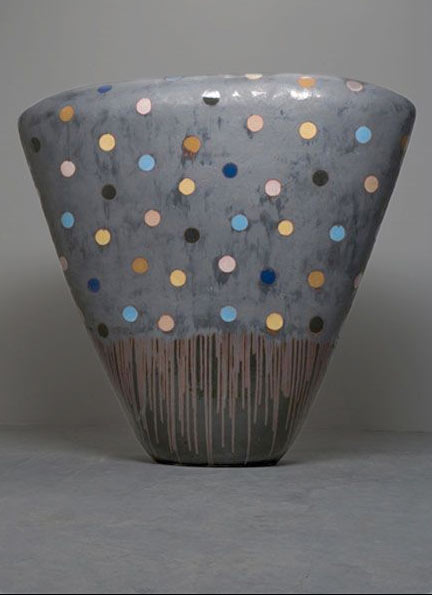
‘Spotty’ Dango sculpture – Jun Kaneko
Monumental heads – Palm Beach County Convention Center.
( Pic by Lauren Lieberman/Lila Photo )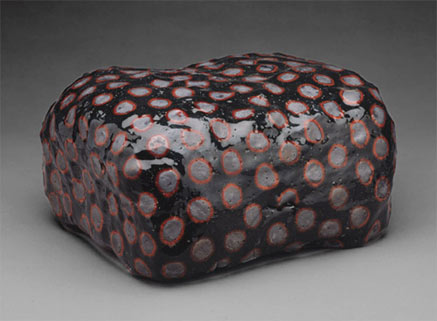
Jun Kaneko 1991
Locks Gallery
Jun Kaneko
Jun’s set design for Puccini’s Madam Butterfly
Public Dango art at Omaha
Untitled wall slab – Jun Kaneko
Untitled, Dango
2009
Oval Dish
Joslyn Art Museum Sculpture – Jun Kaneko
Public Dango ceramic art – Omaha
Jun Kaneko
The Nevica Project
Jun Kaneko
Untitled, 2007 Glazed stoneware. Courtesy of Jun Kaneko and Locks Gallery. Philadelphia Museum of Art.
Untitled, Dango
2011
Ceramic Dango sculpture – San Francisco International airport
Hand-built glazed ceramic – Inakigu Restaurant, 2010
Jun Kaneko Dango Sculpture 2012
Locks Gallery
Pittsburg Project, USA
Kaneko on Park Avenue Installation
Here is the link to Jun Janeko’s website

